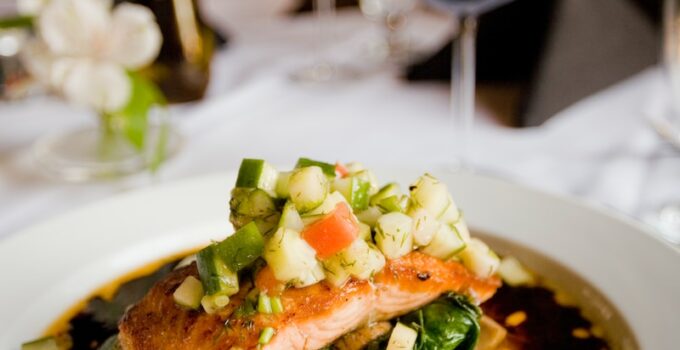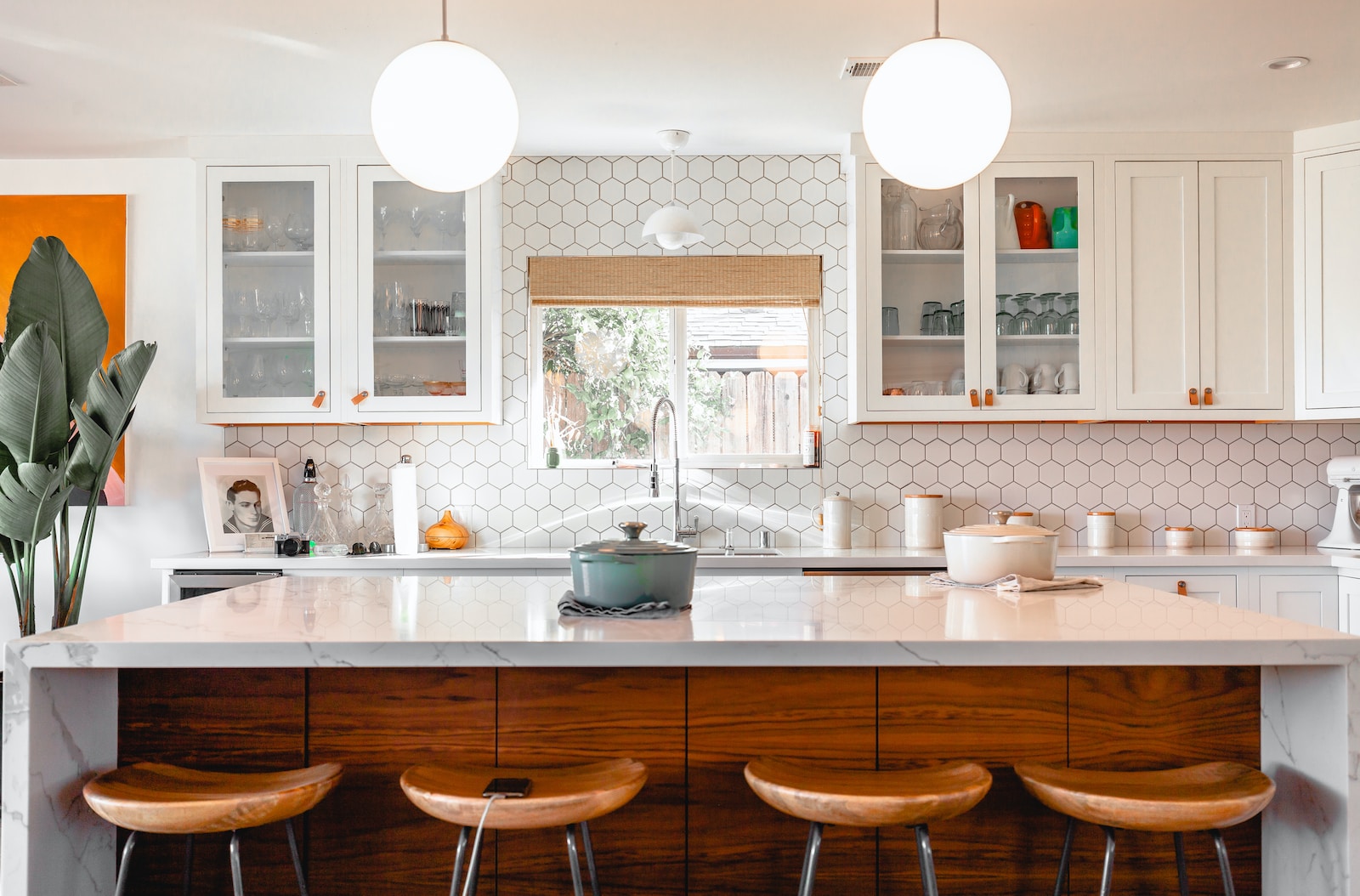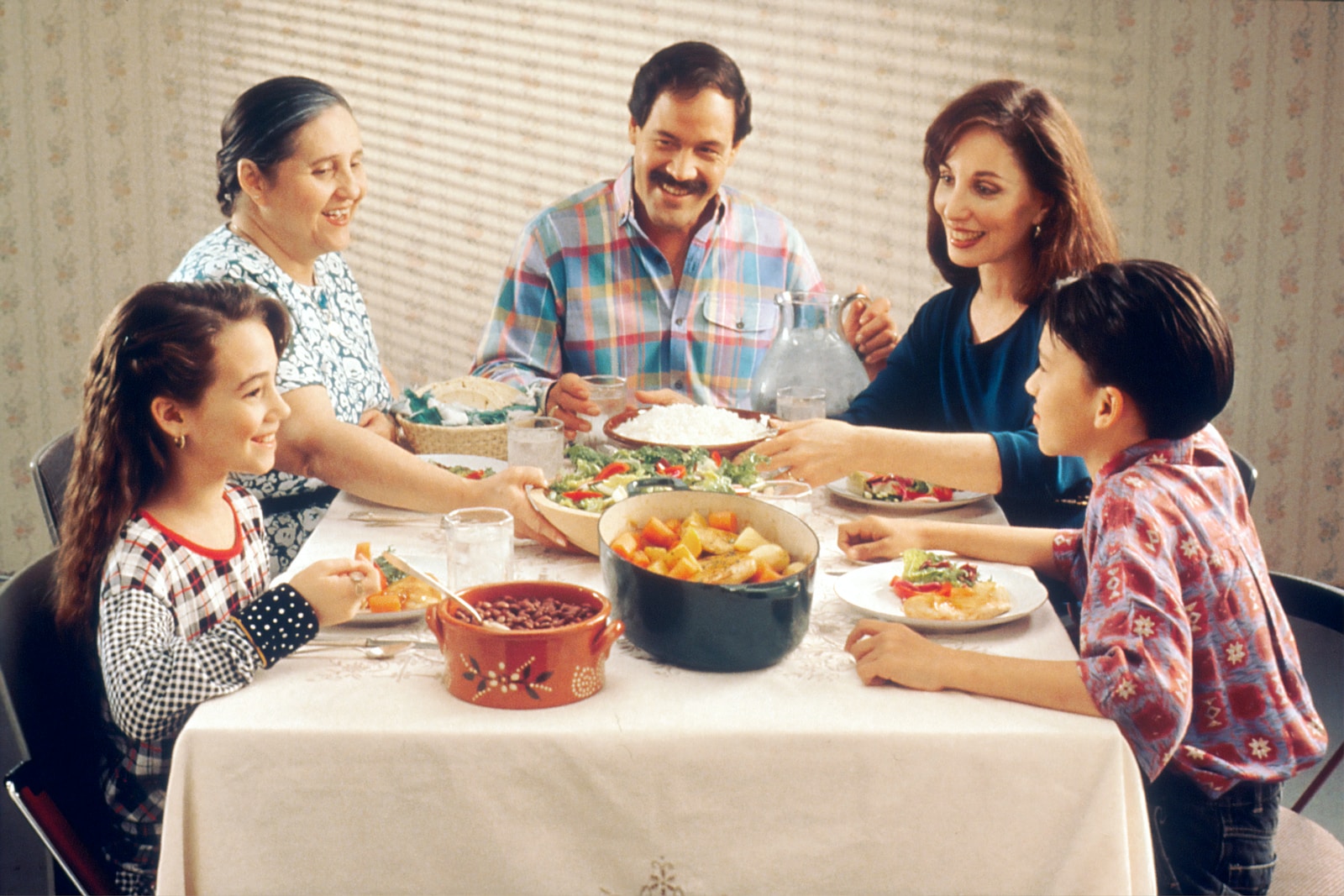Are you tired of meal planning and cooking every day? Do you want to enjoy delicious and healthy meals without the hassle of shopping, prepping, and cooking? If so, hiring a personal chef might be the perfect solution for you. A personal chef can create customized menus based on your dietary preferences and restrictions, shop for the ingredients, and prepare delicious meals in the comfort of your own home.
In this article, we will guide you through the process of planning menus with a personal chef. We will cover everything from understanding the role of a personal chef and the importance of menu planning to finding inspiration for your menu and incorporating seasonal ingredients. We will also provide tips on creating healthy and delicious menus, budget-friendly menu planning, and communicating with your personal chef to ensure that your meals meet your expectations. By the end of this article, you will be ready to hire a personal chef and enjoy stress-free, delicious meals at home.
Key Takeaways
- Menu planning with a personal chef can save you time and effort while providing you with delicious and healthy meals.
- Understanding your dietary preferences and restrictions is crucial for creating customized menus that meet your needs.
- Communicating with your personal chef and providing feedback can help ensure that your meals are tailored to your taste and expectations.
Understanding the Role of a Personal Chef
If you’re considering hiring a personal chef, it’s important to understand what their role is and how they can help you with your meal planning. A personal chef is a professional who is hired to prepare meals for individuals or families on a regular basis. They can work in your home or in a commercial kitchen, depending on your preferences.
Personal chefs offer a variety of services, ranging from menu planning and grocery shopping to meal preparation and cleanup. They can also accommodate special dietary needs, such as gluten-free, vegetarian, or low-carb diets. When you work with a personal chef, you’ll have the opportunity to customize your meals to your liking and ensure that they meet your nutritional needs.
One of the benefits of working with a personal chef is that they can help you save time and reduce stress. Instead of spending hours planning meals, shopping for groceries, and cooking, you can leave those tasks to your personal chef and focus on other things. This can be especially beneficial for busy individuals and families who don’t have a lot of time to devote to meal planning and preparation.
Another advantage of working with a personal chef is that they can help you develop a connection with your food. By working closely with your chef to plan menus and select ingredients, you’ll gain a deeper appreciation for the food you’re eating and the effort that goes into preparing it. This can help you develop a healthier relationship with food and make mealtime more enjoyable.
Overall, a personal chef service can be a valuable investment for anyone who wants to eat well without the hassle of meal planning and preparation. By working with a personal chef, you can enjoy delicious, healthy meals that are customized to your preferences and nutritional needs.
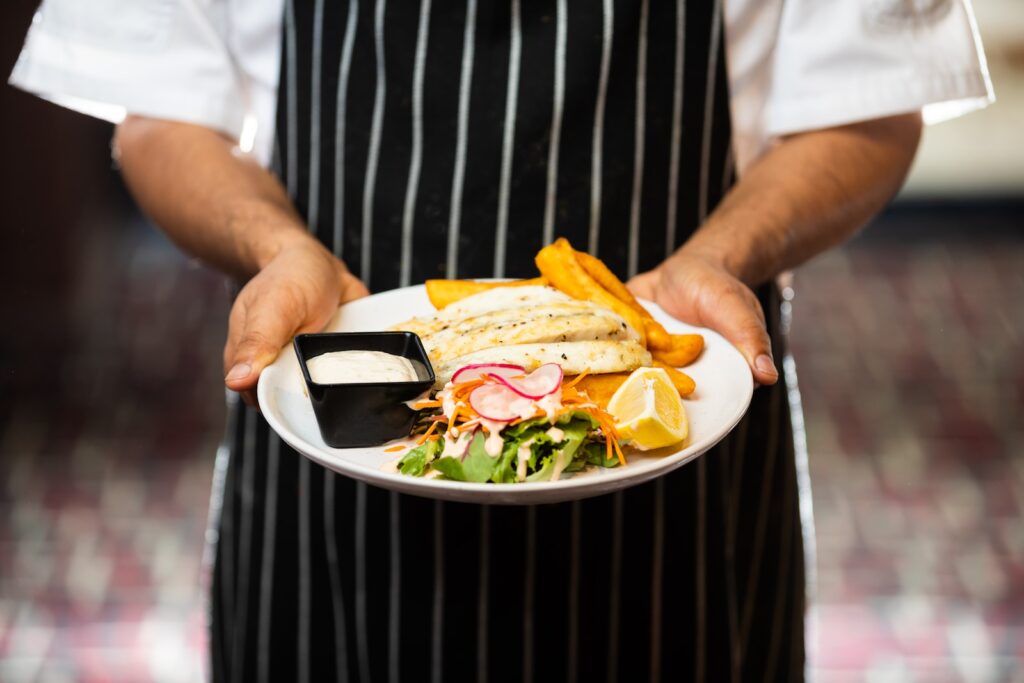
The Importance of Menu Planning
As a personal chef, menu planning is one of the most important aspects of your job. It not only ensures that your clients are satisfied with the meals you prepare, but it also helps you stay organized and efficient in the kitchen. Here are a few reasons why menu planning is crucial for any personal chef:
Saves Time and Money
Menu planning allows you to plan ahead and shop for ingredients in bulk, which can save you time and money in the long run. By creating a master list of all the recipes you use, you can easily keep track of the ingredients you need and avoid making multiple trips to the grocery store.
Offers Variety and Flexibility
A well-planned menu can offer your clients a variety of dishes to choose from, while also catering to their individual tastes and dietary restrictions. By creating a meal plan that includes different cuisines and cooking techniques, you can keep your clients interested and excited about the meals you prepare.
Helps You Stay Organized
Menu planning can help you stay organized in the kitchen by providing a clear plan of action for each meal. By breaking down the steps involved in each recipe, you can create a timeline for when each dish should be prepared and served. This can help you avoid last-minute scrambling and ensure that each meal is served on time.
Improves Efficiency
By planning your menus ahead of time, you can streamline your cooking process and improve your efficiency in the kitchen. By prepping ingredients in advance and having a clear plan of action, you can minimize waste and avoid overcooking or undercooking dishes.
In summary, menu planning is a crucial aspect of any personal chef’s job. It saves time and money, offers variety and flexibility, helps you stay organized, and improves your efficiency in the kitchen. By taking the time to plan your menus ahead of time, you can ensure that your clients are satisfied with the meals you prepare and that your business runs smoothly.
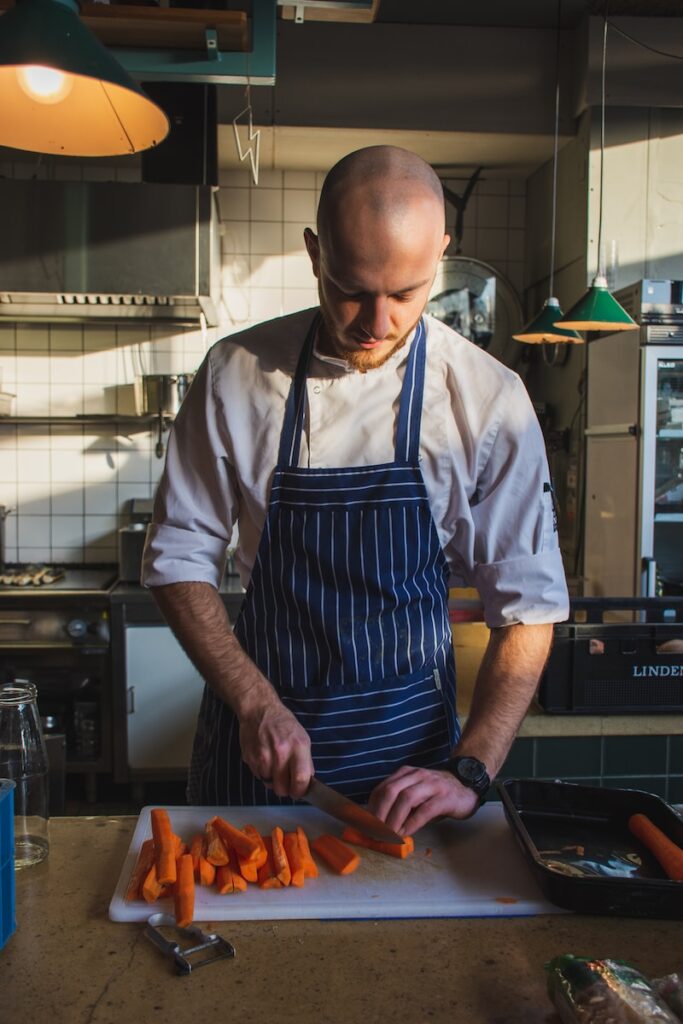
Finding Inspiration for Your Menu
As a personal chef, menu planning is one of your most important tasks. It’s crucial to create a menu that suits your clients’ tastes and dietary needs, while also keeping things fresh and exciting. Here are some tips to help you find inspiration for your menu:
Look for Inspiration Everywhere
Inspiration can come from anywhere, so don’t limit yourself to just one source. Keep an eye out for interesting recipes in cookbooks, magazines, and online. Websites like Pinterest can be a great resource for finding new and exciting recipes to try.
Get Creative with Your Recipes
Don’t be afraid to experiment with new ingredients and flavors. Try adding a unique twist to a classic recipe, or create a fusion dish that combines different cuisines. You can also try creating your own signature dishes that showcase your culinary skills.
Use Sample Menus for Inspiration
Sample menus can be a great starting point for creating your own menu. Look for sample menus online or in cookbooks, and use them as a guide for creating your own menu. You can also use sample menus to get ideas for new dishes to try.
Consider Your Clients’ Preferences
When planning your menu, it’s important to consider your clients’ preferences. Ask them what their favorite dishes are, and try to incorporate those into your menu. You should also ask about any dietary restrictions or allergies, and make sure to create dishes that meet those needs.
Stay Up-to-Date with Food Trends
Food trends are constantly changing, so it’s important to stay up-to-date with the latest culinary trends. Follow food bloggers and influencers on social media, and attend food festivals and events to get inspiration for new dishes to try.
By using these tips, you can find inspiration for your menu and create dishes that your clients will love. Remember to always be creative and open to trying new things, and don’t be afraid to ask for feedback from your clients to help improve your menu.
Considering Dietary Restrictions and Preferences
When planning menus with a personal chef, it is important to consider any dietary restrictions or preferences that you or your guests may have. This will ensure that everyone can enjoy the meal and avoid any discomfort or allergic reactions. Here are some tips to keep in mind when working with a personal chef to plan your menus.
Ask About Dietary Restrictions and Preferences
Before planning any menus, it is important to ask your guests or family members about any dietary restrictions or preferences they may have. This can include allergies, intolerances, vegetarian or vegan lifestyles, and gluten-free diets. Once you have this information, you can work with your personal chef to create a menu that accommodates everyone’s needs.
Work with Your Personal Chef
Your personal chef has experience working with a variety of dietary restrictions and preferences. They can offer suggestions and substitutions to ensure that everyone can enjoy the meal. For example, if someone is allergic to nuts, the chef can use alternative ingredients or omit nuts from the recipe entirely. If someone is following a vegan lifestyle, the chef can create plant-based dishes that are just as delicious and satisfying as meat-based dishes.
Be Clear About Your Needs
When working with a personal chef, it is important to be clear about your dietary restrictions and preferences. This will help the chef create a menu that meets your needs and avoids any confusion or mistakes. For example, if you are gluten-free, be sure to let the chef know so that they can avoid using any gluten-containing ingredients.
Consider Your Guests’ Preferences
In addition to dietary restrictions, it is also important to consider your guests’ preferences when planning menus. Some people may prefer certain flavors or cuisines, while others may have cultural or religious restrictions. By taking these preferences into account, you can create a menu that everyone will enjoy.
Final Thoughts
When planning menus with a personal chef, it is important to consider any dietary restrictions and preferences. By working together, you can create a menu that accommodates everyone’s needs and ensures that everyone can enjoy the meal. So, be sure to communicate your needs clearly, ask for suggestions, and consider your guests’ preferences to create a delicious and satisfying menu.
Incorporating Seasonal Ingredients
As a personal chef, incorporating seasonal ingredients into your menu is a great way to add variety and freshness to your dishes. Here are some tips to help you plan your menu with seasonal produce:
1. Know what’s in season
Before planning your menu, research what fruits and vegetables are in season in your area. This will ensure that you are using the freshest and most flavorful ingredients available. You can also check with local farmers markets or specialty food stores to see what’s currently in season.
2. Plan your menu around seasonal ingredients
Once you know what’s in season, plan your menu around those ingredients. For example, in the fall, you can incorporate pumpkin, butternut squash, and apples into your dishes. In the summer, you can use fresh berries, tomatoes, and corn.
3. Experiment with new recipes
Incorporating seasonal produce into your menu is a great opportunity to try new recipes. Look for recipes that feature the seasonal ingredients you want to use, and experiment with different flavor combinations to create unique and delicious dishes.
4. Consider the nutritional benefits
Seasonal produce is not only delicious, but it also offers many nutritional benefits. For example, in the fall, pumpkin is high in fiber and vitamin A, while in the summer, berries are rich in antioxidants. Incorporating seasonal produce into your menu can help you create healthy and nutritious dishes.
5. Be mindful of availability
While using seasonal produce is a great way to add variety to your menu, it’s important to be mindful of availability. Some ingredients may only be available for a short period of time, so be sure to plan accordingly and adjust your menu as needed.
By incorporating seasonal ingredients into your menu, you can create fresh, flavorful, and nutritious dishes that your clients will love.
Creating Healthy and Delicious Menus
As a personal chef, creating menus that are both healthy and delicious is crucial for your clients’ satisfaction. Here are some tips to help you create menus that will keep your clients coming back for more.
Prioritize Nutrient-Dense Foods
When planning your menus, prioritize nutrient-dense foods such as fruits, vegetables, lean proteins, and whole grains. These foods provide essential vitamins, minerals, and fiber that are important for overall health. Additionally, they can help your clients feel full and satisfied, which can prevent overeating and promote weight management.
Pay Attention to Portion Sizes
Portion sizes can have a big impact on the overall healthfulness of a meal. It’s important to provide appropriate portion sizes to help your clients maintain a healthy weight and prevent overeating. Consider using measuring cups or a food scale to ensure that you are providing the correct portion sizes.
Offer a Variety of Flavors and Textures
Creating menus that are both healthy and delicious means offering a variety of flavors and textures. Consider incorporating different cooking methods, spices, and herbs to add flavor to your dishes. Additionally, offering a variety of textures such as crunchy, creamy, and chewy can make meals more interesting and satisfying.
Make Substitutions
When creating menus, consider making substitutions to make dishes healthier. For example, you can use Greek yogurt instead of sour cream, or use whole wheat pasta instead of white pasta. These small changes can make a big difference in the overall healthfulness of a meal.
Balance Macronutrients
It’s important to balance macronutrients such as carbohydrates, protein, and fat to create a well-rounded meal. Consider including a source of lean protein, a complex carbohydrate, and a healthy fat in each meal. This can help your clients feel full and satisfied while providing essential nutrients.
By following these tips, you can create menus that are both healthy and delicious. Your clients will appreciate the effort you put into creating meals that are not only good for them, but also taste great.
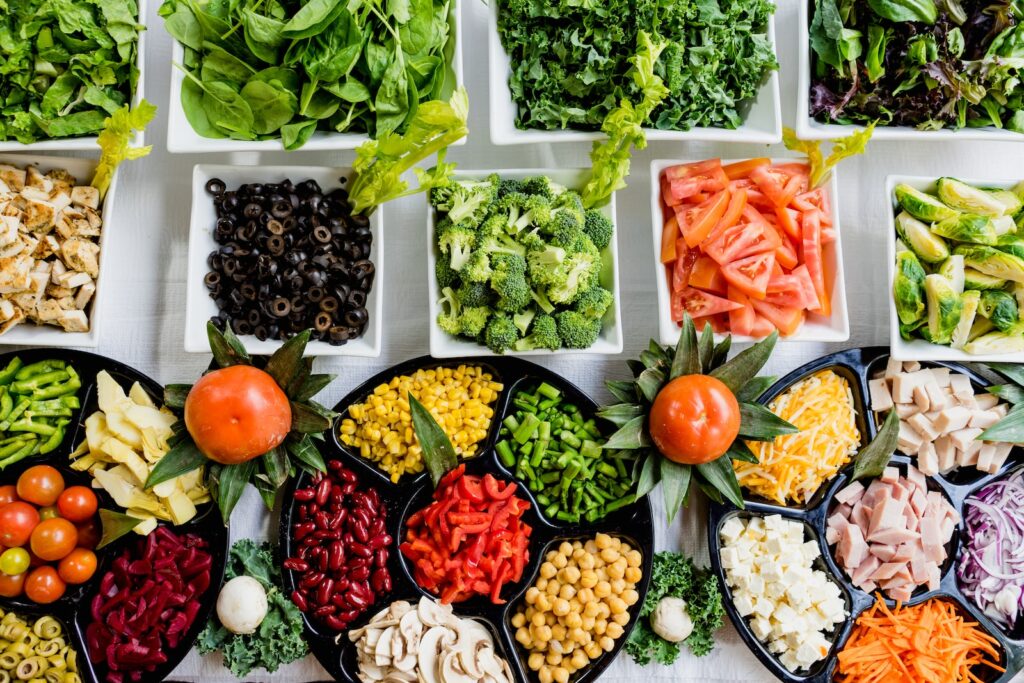
Budget-Friendly Menu Planning
As a personal chef, menu planning is an essential part of your job. One of the most challenging aspects of meal planning is keeping it budget-friendly. However, with a few tips and tricks, you can create delicious and healthy menus while staying within your clients’ budget.
Plan Ahead
When planning a budget-friendly menu, it’s essential to plan ahead. Take some time to think about the meals you want to prepare for the week and make a list of the ingredients you need. This way, you can avoid buying unnecessary items and stick to your budget.
Use Affordable Ingredients
Incorporating affordable ingredients such as rice and beans into your menu is an excellent way to keep costs down. These ingredients are versatile, and you can use them in various dishes. Brown rice is also an excellent alternative to white rice as it’s more nutritious and budget-friendly.
Make Use of Leftovers
Another way to keep your menu budget-friendly is to make use of leftovers. For example, if you’re preparing a roast chicken for dinner, you can use the leftover meat to make a chicken salad for lunch the next day. This way, you can avoid wasting food and save money.
Be Creative
Being creative with your menu planning can also help you keep costs down. For example, instead of serving expensive cuts of meat, you can use cheaper cuts and slow cook them to make them more tender and flavorful. You can also incorporate seasonal produce into your dishes, which is often more affordable.
In conclusion, planning a budget-friendly menu as a personal chef is possible with a little creativity and planning. By using affordable ingredients, making use of leftovers, and being creative with your menu planning, you can create delicious and healthy meals while staying within your clients’ budget.
Communicating with Your Personal Chef
One of the most important aspects of working with a personal chef is clear communication. Here are some tips to help you communicate effectively with your personal chef:
Be Honest About Your Preferences and Dietary Needs
Your personal chef needs to know your food preferences and any dietary restrictions you may have to create a menu that fits your needs. Be honest and upfront about your likes and dislikes, as well as any allergies or food intolerances you may have. This will help your chef create a menu that you will enjoy and can safely eat.
Provide Feedback on Menu Items
If you try a dish and don’t like it, let your personal chef know. Providing feedback on menu items is important so that your chef can adjust the menu accordingly. Be specific about what you didn’t like and why, so your chef can make changes that will better suit your tastes.
Use Email to Communicate
Email is a great way to communicate with your personal chef. It allows you to easily provide feedback, make changes to your menu, and ask questions. Plus, it provides a written record of your communication, which can be helpful if there are any misunderstandings or issues down the line.
Discuss Budget and Schedule
Be upfront with your personal chef about your budget and schedule. This will help your chef create a menu and schedule that works for you. If you have a specific budget in mind, let your chef know so they can create a menu that fits within your budget. And if you have any scheduling constraints, such as specific days of the week when you need meals prepared, let your chef know so they can plan accordingly.
Be Open to Trying New Things
While it’s important to communicate your food preferences and dietary needs, it’s also important to be open to trying new things. Your personal chef may suggest dishes or ingredients that you haven’t tried before, and it’s worth giving them a chance. Who knows, you may discover a new favorite dish!
Finalizing and Pricing the Menu
Once you have worked with your personal chef to create a menu that meets your needs and preferences, it’s time to finalize and price the menu. This step is essential to ensure that you stay within your budget while still enjoying delicious, healthy meals.
Finalizing the Menu
Before finalizing the menu, make sure to review it carefully with your personal chef to ensure that all of your needs and preferences are met. You can also make any last-minute changes or adjustments to the menu at this stage.
Once you have finalized the menu, your personal chef will provide you with a shopping list of ingredients needed to prepare the meals. This list will help you ensure that you have all the necessary ingredients on hand when your chef arrives to cook.
Pricing the Menu
Pricing for personal chef services can vary depending on factors such as experience, menu selections, and other factors. According to Meal Prep Mavericks, the average cost for meal prep services is $35 to $55 per meal.
When pricing your menu, your personal chef will take into account the cost of ingredients, preparation time, and any other expenses associated with preparing and serving the meals. It’s important to discuss pricing with your personal chef upfront to ensure that you are comfortable with the cost and that it fits within your budget.
Keep in mind that meal planning with a personal chef can be more cost-effective than eating out or buying pre-made meals. Your personal chef can help you make the most of your budget while still providing delicious, healthy meals.
In conclusion, finalizing and pricing the menu is an important step in the meal planning process with a personal chef. By carefully reviewing and adjusting the menu, and discussing pricing with your personal chef, you can ensure that you stay within your budget while still enjoying delicious, healthy meals.
Exploring Different Cuisines
One of the benefits of working with a personal chef is the opportunity to explore different cuisines. Whether you’re looking to try something new or want to incorporate your favorite international dishes into your meal plan, your personal chef can help you create a menu that satisfies your cravings.
Here are a few tips for exploring different cuisines with your personal chef:
Start with your favorites
If you already have a favorite cuisine, start there. Your personal chef can help you create dishes that are true to the flavors and ingredients of that cuisine, while also incorporating any dietary restrictions or preferences you may have.
For example, if you love Italian food, your personal chef could create a menu that includes classic dishes like pasta carbonara or chicken parmesan, as well as lighter options like grilled fish with roasted vegetables.
Experiment with new ingredients
Exploring different cuisines is a great opportunity to try new ingredients. Your personal chef can introduce you to new flavors, spices, and herbs that you may not have used before.
For example, if you’re interested in Indian cuisine, your personal chef could incorporate spices like turmeric, cumin, and coriander into your meals. They could also introduce you to ingredients like paneer (a type of cheese used in Indian cooking) or ghee (clarified butter).
Mix and match
Don’t be afraid to mix and match cuisines. Your personal chef can help you create a menu that combines elements from different cuisines to create unique and flavorful dishes.
For example, you could try a fusion dish like Korean BBQ tacos or Thai-inspired chicken curry. Your personal chef can help you find the right balance of flavors and ingredients to create a dish that satisfies your taste buds.
Conclusion
Exploring different cuisines with your personal chef is a fun and delicious way to expand your palate. Whether you’re looking to try something new or want to incorporate your favorite international dishes into your meal plan, your personal chef can help you create a menu that satisfies your cravings.
Frequently Asked Questions
What are the 5 basic steps of menu planning?
The five basic steps of menu planning are:
- Determine the purpose of the meal
- Choose the type of menu
- Select the dishes
- Determine the quantities
- Plan the presentation
Do chefs plan the menus?
Yes, personal chefs plan menus for their clients. They create custom menus based on their client’s preferences, dietary restrictions, and event type.
How do I create a menu plan?
Creating a menu plan involves identifying the purpose of the meal, choosing the type of menu, selecting dishes, determining quantities, and planning the presentation. You can create a menu plan by following these steps or by working with a personal chef who can create a custom menu plan for you.
What are the four steps in menu planning?
The four steps in menu planning are:
- Identify the purpose of the meal
- Choose the type of menu
- Select dishes
- Plan the presentation
How can a personal chef help with menu planning?
A personal chef can help with menu planning by creating custom menus based on your preferences, dietary restrictions, and event type. They can also provide suggestions for dishes, help with quantities, and plan the presentation.
What are some tips for working with a personal chef to plan menus?
Some tips for working with a personal chef to plan menus include:
- Be clear about your preferences and dietary restrictions
- Discuss the purpose of the meal
- Provide feedback on dishes and presentation
- Communicate any changes or adjustments you would like to make
- Be open to suggestions and new ideas from the personal chef.
About the author
Dr Harlan Kilstein has been fascinated by cooking and food technology since he was young.
He has worked in the catering industry for many years.
He has authored more than a dozen recipe books in the Keto niche including Speed Keto, Speed Keto RFL (Rapid Fat Loss) and many more.

